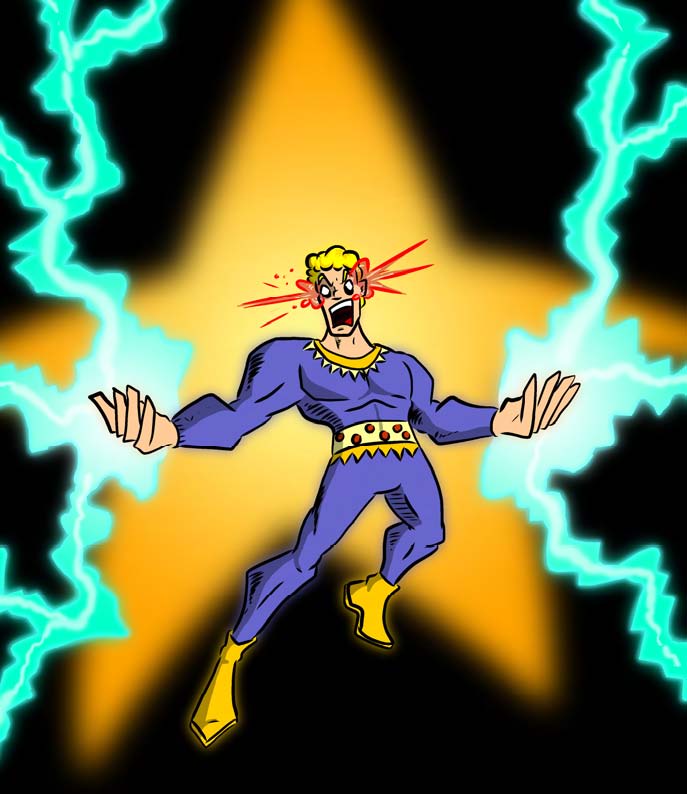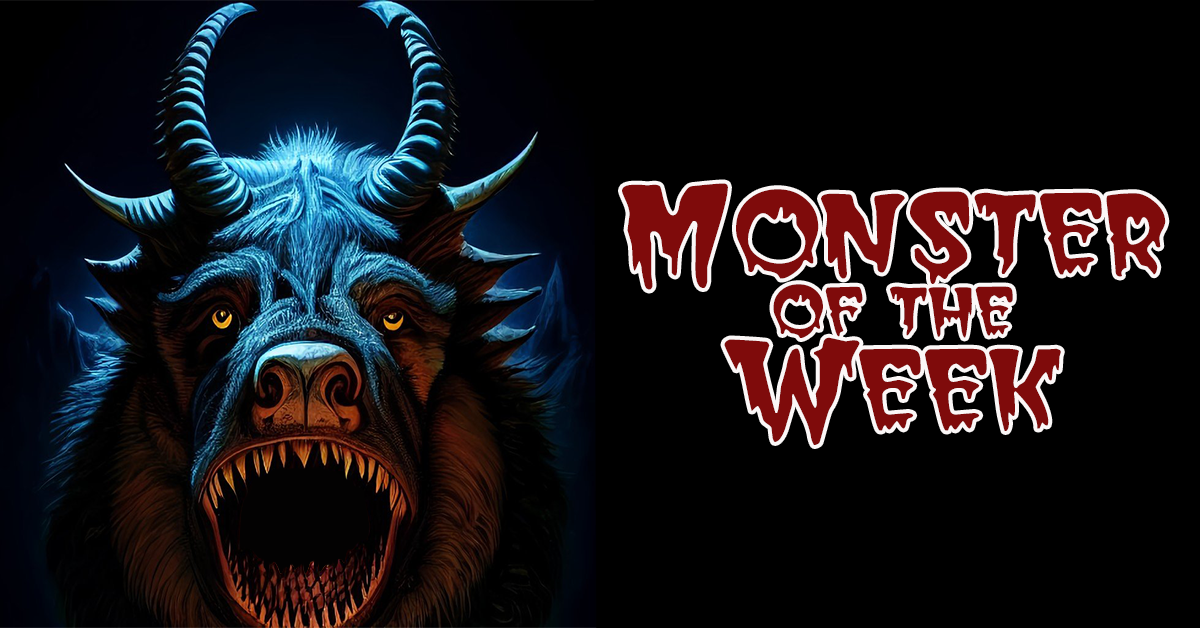We may earn money or products from the companies mentioned in this post.
Before I get into this week’s blog, I forgot to mention last week that I recently the newest installment of my series of role-playing articles on HubPages, “Seven Rules Every RPG Player Should Know.” Also, just yesterday Hex released our first novel, Carter Newton’s Suicide’s Run: A Tale of the Hobomancers. Carter does a great job of bringing the world of Hobomancer to life, so it’s a must-have if you’re a fan of the game. We’ll be posting a 3-part interview with Carter here on the Death Cookie starting Wednesday. Next week, we’ll have an interview with Jeffrey Johnson, who illustrated the novel.
Earlier this week, a poster on the not-quite-abandoned QAGS subreddit asked for tips about using flash-bang style magic in a QAGS game. As he correctly pointed out, the system from Magic Rules! (and the variations on the theme that have appeared in Zoe the Zombie Hunter and a few other supplements) are really written for ritual magic and aren’t a great fit for the “wizard chucking fireballs” variety of spellcasting. That’s by design. As I am contractually obligated to point out, the “flash-bang” style of magic found in most games has no precedent in real-world magical tradition (at least as a force that can be harnessed by regular humans), and even the magic in early fantasy fiction was usually much more subtle than the kind of magic you see in a typical RPG. The Magic Rules! system was designed to encourage magic that mostly manifests in subtle ways that aren’t necessarily verifiable as the result of magic. Overt magical manifestations are difficult to accomplish, unpredictable, weird, and a little terrifying.

Sometime in the 20th Century, fictional magic started getting more overt and predictable, and wizards began to act more like scientific experts or master craftsmen than crazed weirdos who harnessed (and made deals with) powers beyond human comprehension. I don’t know the exact timeline, but I suspect that Jack Vance and comic books were key influencers early on, and the popularity of D&D did the rest. By the time we reached the era of fantasy video games and D&D-derivative fiction, flash-bang was the default style of magic. Today, even stories that aren’t directly descended from the 20th Century fantasy mainstream of Tolkien, pulp, comics, D&D derivatives, and video games tend to use flash-bang magic. Take the Harry Potter series, for example: Rowling’s main influences seem to be fairy tales, mythology, and earlier young adult fiction, but take away the wands and pseudo-Latin and Harry and the gang would fit in as well at Xavier School as Hogwart’s.
So, since magic-as-superpower is a thing now, how do we handle it in QAGS? That’s simple: Just like any other Job. If restrictions on magic aren’t dictated by the genre, setting, tone, or style of the story you’re telling (which we’ll discuss more later), there’s no reason to treat wizardry differently than any other profession, at least mechanically. Warriors slice people up and bash their heads in, thieves lurk about and steal things, and wizards cast spells. If a wizard wants to cast a spell, he makes a Job roll, just like a con artist would make a Job roll to sell somebody a bridge. Usually, there are mechanics for doing something similar to the spell’s effect without magic that can be used if you need rules: mind control is really insistent persuasion, invisibility is ninja-level stealth, and a magic missile is just a bullet with better special effects.
For the most part, the idea that magic needs its own specialized rules to keep wizards from becoming “too powerful” is a gamer superstition wrapped up in the myth of game balance. Once you accept that game balance isn’t real, the necessity of specialized magic rules mostly falls away. We don’t worry that giving a gunslinger too much ammo will make a character too powerful or make a hacker list which programming languages he knows, so why worry about how many Magic Missiles a wizard can cast and make him keep a spell list?
There is still one pitfall of treating magic just like any other ability: its versatility. For most Jobs, there’s a certain baseline understanding of what a character can do based on fictional and real-life examples, usually across a wide variety of genres and settings. A warrior’s job is to kill things regardless of the genre, so the only restrictions necessary are genre and style conventions that we trust the player to follow and, if necessary, the GM to enforce. The Bride can decapitate a whole circle of ninjas with one sword swing, but John McClane needs a grenade or machine gun to kill a bunch of people with a single attack. Since magic differs considerably from story to story, there’s a lot less consensus about what it means to be a wizard, so the “wizard” Job can come dangerously close to “Jack of All Trades.” We know a cop fights crime and thief separates people from their valuables, but there’s no common theme for a vanilla wizard’s abilities. He might talk to a ghost one minute, shapeshift into a giant eagle the next, and set a bunch of people on fire a little later.
While characters don’t have to be “balanced” in terms of power, a story about group of characters does require each character to play a role that differentiates him from the other characters and justifies his inclusion as a protagonist. Audiences tend to notice redundant characters (*cough* Merry & Pippin *cough*) and it can take them out of the story. In RPGs, making sure each character has a clear role also helps keep players from stepping on one another’s toes. A character without a niche makes the other characters seem redundant or comes across as either a universal understudy or a portable deus ex machina. While abilities aren’t the only things that define a character’s role, they’re often the starting point, so sometimes it is necessary to limit an extremely versatile character type to make that character fit the story and the group.
If the players all have similar sensibilities about what constitutes good fantasy, or if you’re playing a game where magic is closely modeled on an existing ficton, you can rely on the same kind of mutual agreement that keeps John McClane from going all Wushu. For example, if you’re playing a Buffy game, it will usually be obvious to everyone involved whether a particular spell is par for the course or veiny yellow crayon territory, as well as whether a spell can be cast with common household items or requires searching for ancient urns on ebay. If the players can’t trust one another to act in good faith (and talk through any disagreements like adults), your group has problems that all the rules in all the games won’t solve.
So what if you’re playing a game where the parameters of magic are too nebulous and the players’ preferences are too varied to rely entirely on mutual understanding and good faith? Fortunately, fantasy authors realized early on that having a character with the power to alter reality made it difficult to build conflicts that couldn’t be solved with some Latin and bat guano. To keep their stories from falling apart, these authors built limitations on magic into their fictons. Some of these limitations were based on fundamental laws of the universe, some were based on the way humans interacted with or learned magic, and some were based on societal, cultural, religious, or professional rules, taboos, and traditions. While these limitations varied considerably from story to story, there were some common themes, and most of them can be easily adapted to a game setting. Since the discussion of how to do that gets pretty involved, I’m going to save that for next week.





